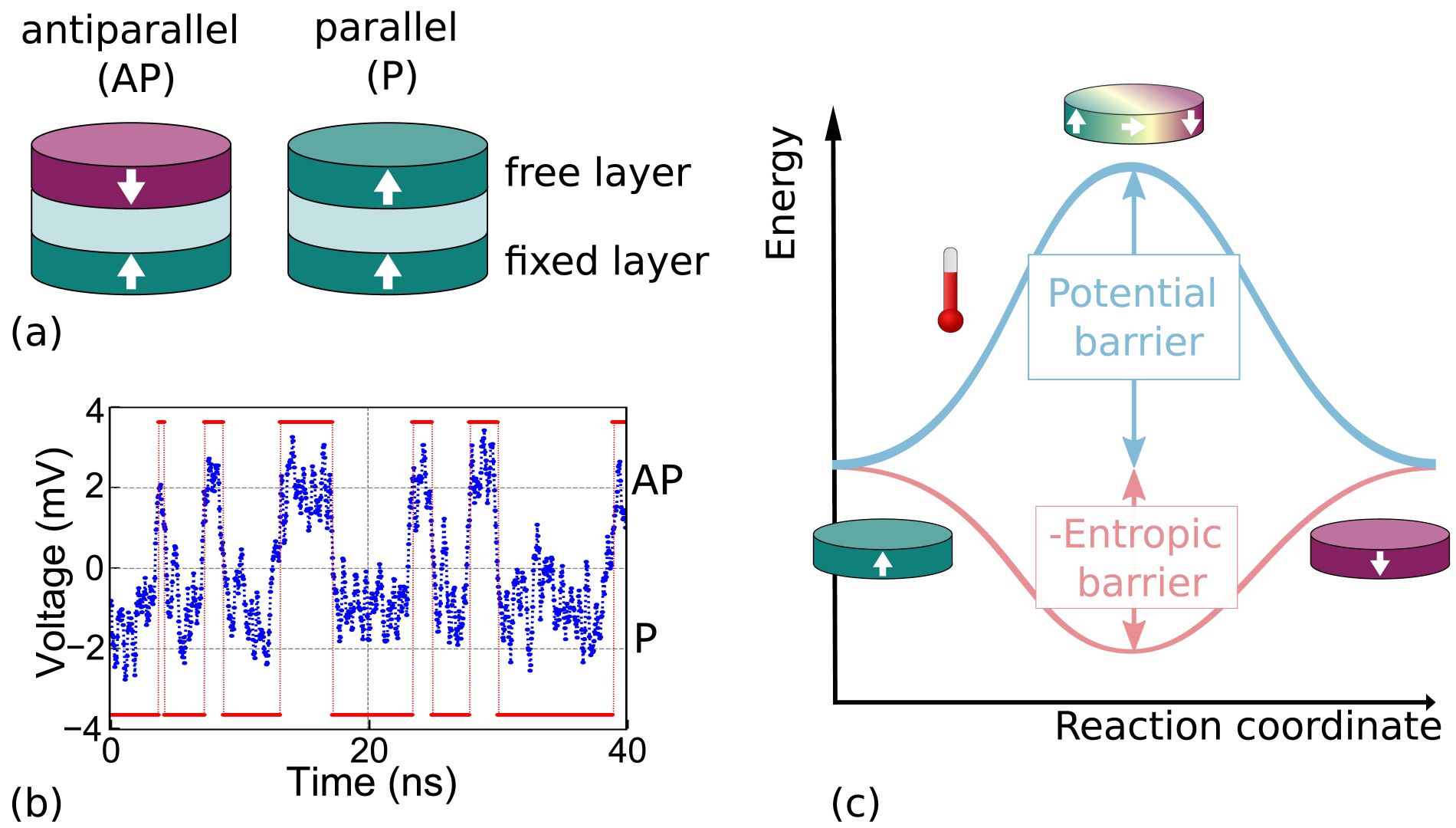In an era where the rapid rise of artificial intelligence is accompanied by exponentially increasing energy costs, a promising avenue is to exploit thermal noise at room temperature as an ultralow-power computing resource. This strategy, which biology already appears to be exploiting in the brain—where noise helps neurons explore and decide—has prompted researchers to design noisy nanocomponents capable of emulating neurons within electronic chips dedicated to computing. To this end, magnetic memory-type nanoneurons have been developed: superparamagnetic tunnel junctions (SMTJs).
SMTJs consist of a free magnetic layer and a fixed magnetic layer, separated by an insulator. The relative orientation of the magnetization in these layers, parallel or antiparallel, corresponds to two metastable states separated by an energy barrier.
In this study, the specific design allows SMTJs to be very sensitive to ambient thermal noise, unlike in usual applications (memory and sensors). Indeed, thermal fluctuations alone can randomly reverse the magnetization of the free layer. In that way, these SMTJs react like binary stochastic neurons, while consuming very little energy. The shorter the mean waiting time between magnetic reversals, the higher the computing speed.
A team from
CEA-Irig/SPINTEC has experimentally measured mean waiting times between magnetization reversals in perpendicularly magnetized superparamagnetic tunnel junctions miniaturized to 50 nm in diameter, purely induced by thermal fluctuations. The measurement requires very low applied currents, in order to observe changes in the orientation of the free magnetic layer on a scale of a few nanoseconds, a timescale never before observed in these systems.
The measured mean waiting times are found to be much lower than those predicted by conventional models, which the researchers theoretically interpret as a significant contribution from Entropy, increasing the probability of overcoming the energy barrier separating the magnetic states of the SMTJ.
Entropy reflects the number of magnetic configurations accessible to the system. In perpendicularly magnetized SMTJs, there are many intermediate states where the magnetization gradually switches from the parallel to the antiparallel orientation (and vice versa). This contributes to a large Entropy, by increasing the number of different ways to transition between states.

Figure © CEA
(a) (a) Schematic of a magnetic tunnel junction. The free layer can be parallel (P) to the fixed layer (green), or anti-parallel (AP) (purple).
(b) (b) Time evolution of the voltage in an SMTJ showing the waiting times between reversals on the scale of a few nanoseconds between the P (-2 mV) and AP (+2 mV) states.
(c) (c) Schematic of the energy landscape associated with the magnetization reversal.
Under the effect of thermal energy alone, perpendicular magnetic tunnel junctions with a diameter of only a few tens of nanometers randomly switch from one state to another, with ultra-short mean waiting times between reversals on the order of nanoseconds. By capitalizing on these fluctuations as a magnetization reversal mechanism, this work paves the way for the implementation of stochastic elements for neuromorphic computing with ultralow energy consumption.
Fundings
- ANR (StochNet PRIME SPOT)
- NSF (CCF-CISE-ANR-FET-2121957)
- The French RENATECH network
- The University of Liège (Special Funds for Research, IPD-STEMA Programme)
Collaboration
- National Institute of Standards and Technology
- Gaithersburg, Maryland
- USA University of Maryland
- College Park, Maryland, USA